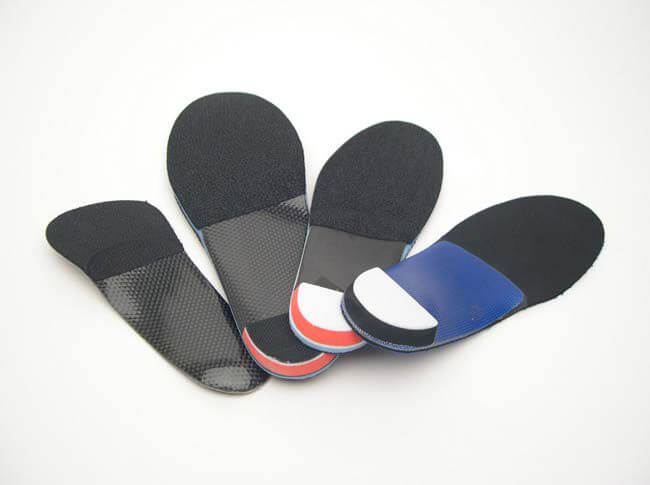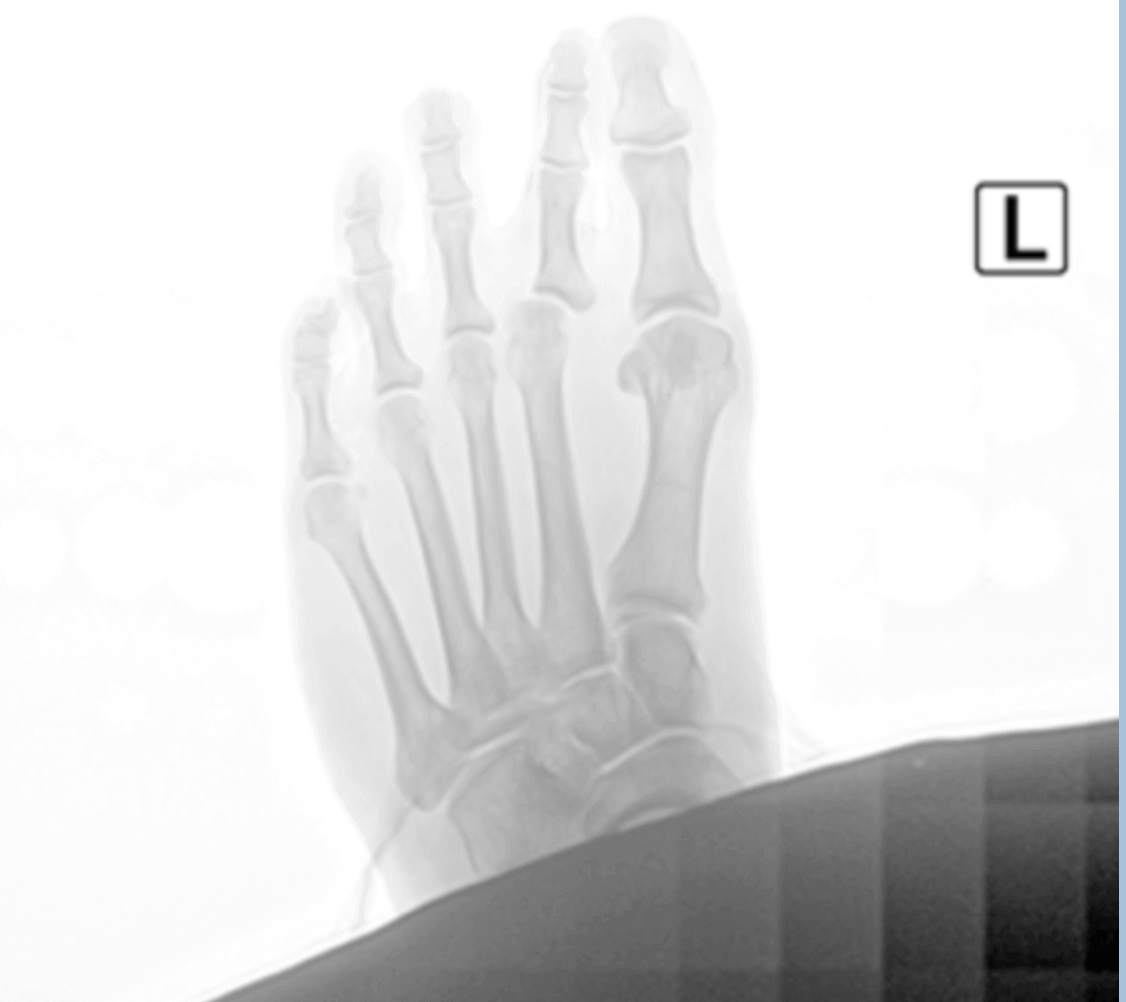 We often see patients who have chronic heel pain and often this is plantar fasciitis. Often those patients that have heel pain and plantar fasciitis have a very thin plantar fat pad. The problem may have started with an injury or even a stone bruise. But, by the time they come in the problems include significant thickening of the plantar fascia that we can verify with diagnostic ultrasound imaging, we can also verify that the plantar fat pad is thinner than it should be and therefore more long-term vulnerability.
We often see patients who have chronic heel pain and often this is plantar fasciitis. Often those patients that have heel pain and plantar fasciitis have a very thin plantar fat pad. The problem may have started with an injury or even a stone bruise. But, by the time they come in the problems include significant thickening of the plantar fascia that we can verify with diagnostic ultrasound imaging, we can also verify that the plantar fat pad is thinner than it should be and therefore more long-term vulnerability.Answers to Foot and Ankle Injury Questions for WA Patients | Issaquah Foot & Ankle Specialists
-
Why Are Some Orthotics So Effective And Others Not?  We often see patients who have chronic heel pain and often this is plantar fasciitis. Often those patients that have heel pain and plantar fasciitis have a very thin plantar fat pad. The problem may have started with an injury or even a stone bruise. But, by the time they come in the problems include significant thickening of the plantar fascia that we can verify with diagnostic ultrasound imaging, we can also verify that the plantar fat pad is thinner than it should be and therefore more long-term vulnerability.So how to we treat this problem. This is primarily a mechanical problem but also has an inflammatory component for many people. As far as the mechanical component of the problem goes, avoiding going barefoot and wearing very good shoes, a night splint, bracing taping are all helpful. But the most important mainstay of treatment for chronic plantar fasciitis is proper orthotics combined with good shoes.For our patients with plantar fasciitis, I often include special modifications to the orthotic prescription. This may include a very deep heel cup in the bottom of the polypropylene shell of the orthotic. In the center of the heel cup I often have an aperture or hole that is filled with silicone gel and then backfilled with poron which is a special shock absorbing foam as a top layer. This is then covered with Spenco which the type of neoprene. In addition, the orthotic fits the foot perfectly and holds the foot in its ideal mechanical position. This decreases the longitudinal tension within the plantar fascia itself. Remember that the plantar fascia goes from the heel to the base of the great toe (and first metatarsal) and across the rest of the forefoot. It is very effective to allow the first metatarsal head to go down (plantarflex). This decreases the longitudinal tension within the plantar fascia. This modification can include a first metatarsal cutout and reverse Morton's extension.At Issaquah Foot & Ankle Specialists, our goal is to help our patients to heal as quickly as possible. We do whatever we can to enhance and speed up the healing process. If you have plantar fasciitis and heel pain, we are happy to help you. We have patients who come in from all over Washington State and the Northwest.
We often see patients who have chronic heel pain and often this is plantar fasciitis. Often those patients that have heel pain and plantar fasciitis have a very thin plantar fat pad. The problem may have started with an injury or even a stone bruise. But, by the time they come in the problems include significant thickening of the plantar fascia that we can verify with diagnostic ultrasound imaging, we can also verify that the plantar fat pad is thinner than it should be and therefore more long-term vulnerability.So how to we treat this problem. This is primarily a mechanical problem but also has an inflammatory component for many people. As far as the mechanical component of the problem goes, avoiding going barefoot and wearing very good shoes, a night splint, bracing taping are all helpful. But the most important mainstay of treatment for chronic plantar fasciitis is proper orthotics combined with good shoes.For our patients with plantar fasciitis, I often include special modifications to the orthotic prescription. This may include a very deep heel cup in the bottom of the polypropylene shell of the orthotic. In the center of the heel cup I often have an aperture or hole that is filled with silicone gel and then backfilled with poron which is a special shock absorbing foam as a top layer. This is then covered with Spenco which the type of neoprene. In addition, the orthotic fits the foot perfectly and holds the foot in its ideal mechanical position. This decreases the longitudinal tension within the plantar fascia itself. Remember that the plantar fascia goes from the heel to the base of the great toe (and first metatarsal) and across the rest of the forefoot. It is very effective to allow the first metatarsal head to go down (plantarflex). This decreases the longitudinal tension within the plantar fascia. This modification can include a first metatarsal cutout and reverse Morton's extension.At Issaquah Foot & Ankle Specialists, our goal is to help our patients to heal as quickly as possible. We do whatever we can to enhance and speed up the healing process. If you have plantar fasciitis and heel pain, we are happy to help you. We have patients who come in from all over Washington State and the Northwest. -
What Is Toenail Fungus? Toenail fungus, or onychomycosis, is an infection underneath the surface of the nail caused by fungi. When the tiny organisms take hold, the nail often becomes darker in color and smells foul. Debris may collect beneath the nail plate, white marks frequently appear on the nail plate, and the infection is capable of spreading to other toenails, the skin, or even the fingernails. If ignored, the infection can spread and possibly impair your ability to work or even walk. The resulting thicker nails are difficult to trim and make walking painful when wearing shoes. Onychomycosis can also be accompanied by a secondary bacterial or yeast infection in or about the nail plate. -
What Is An Ingrown Toenail? Ingrown toenails occur when bacteria gets trapped between your toenail and skin, usually near the borders of the toenail. This causes a localized infection to occur which results in pain, swelling, redness and increased warmth. There does appear to be a hereditary component to the development of ingrown toenails but, trauma, improper trimming and poor fitting shoes can contribute to the development as well. -
What Should Be Done With My Ingrown Toenails? Do not attempt to remove infected nails on your own. If you notice an increase of swelling, pain or any discharge is present; the toenail is likely infected and should be treated by a podiatrist.
Contact us if you are experiencing painful ingrown toenails, especially if you believe the condition worsening or you have diabetes or circulation issues. Addressing this condition early will help in the prevention of infection and other complications. Ingrown toenails can be very painful and can be treated easily depending upon the severity.
-
How Common Are Bunions? Government statistics indicate about 4.4 million report suffering from bunions in a given year. Bunions will affect more women than men and can be attributed to women’s high-heeled, narrow-toed shoes. Other causes include arthritis and biomechanical gait abnormalities or nerve and muscle disorders of the foot. If left untreated bunions will progress and typically become increasingly painful. This can cause restricted or painful motion of the big toe (small toe for a Tailor’s bunion) resulting in decreased activity levels, inability to wear common footwear and the development of corns. -
What Can Be Done About A Bunion? Because bunions are a progressive disorder the best course of action is early treatment. Bunions left untreated that progress to the point of severe pain that limits activity are more likely to require surgery to correct the issue. The best option is to have your case evaluated by a doctor and devise a treatment plan. There are many treatments available and early action can slow the progression significantly for many people. -
So, What Causes A Bunion? Bunions are a progressive disorder. They begin with a leaning of the big toe (or the little toe, in the case of a Tailor’s bunion), gradually changing the angle of the bones over the years and slowly resulting in the characteristic bump or protrusion. As the condition progresses, this bump will become increasingly prominent. Symptoms usually appear at later stages, although some people may never have symptoms.
Bunions are a common foot deformity that can be inherited or occur as a result of repeated stress to the joint. It is not the bunion itself that is inherited, but certain foot types that make a person prone to developing a bunion. Not wearing proper sized footwear that crowd one’s toes will not cause bunions, however it can contribute to the progression of the deformity. As a result, symptoms may appear sooner with improper footwear.
-
What Is A Tailor’s Bunion? (Also Known As A Bunionette) A Tailor’s bunion is a bunion that occurs on the little toe where the metatarsal bone meets the little toe. Tailor’s bunion is a deformity caused when the head of the metatarsal is pushed outwards. The result is often a painful and swollen protrusion on the outside of the foot.
The causes, diagnosis and treatments are similar for these two types of bunion. Treatment options that are specific to each kind of bunion can vary slightly depending on the severity and type of bunion. If you suffer from either type of bunion they should be evaluated by a doctor for recommended treatment options. Visit bunion treatments for more information about how the Washington Bunion Center effectively treats bunions.
-
What Is A Bunion? A bunion is often described as a protrusion or bump on the side of the foot near the toe joint is. However, a bunion is much more than that. The visible protrusion reflects actual changes in the bony framework of the foot. This disorder causes the toe to “bow out” instead of pointing straight ahead. -
How Long Does It Take To Recover From Bunion Surgery?  How long does it take to recover from bunion surgery is a common question we hear at our foot surgery center. Many patients are concerned about missing work or how long they will be unable to walk and we will explore both of these topics in detail. Contemplating foot surgery, ankle surgery or bunion surgery often creates many questions and concerns for patient’s especially recovery time. These are important questions and knowing these answers going into the surgery is important in order to make appropriate plans.
How long does it take to recover from bunion surgery is a common question we hear at our foot surgery center. Many patients are concerned about missing work or how long they will be unable to walk and we will explore both of these topics in detail. Contemplating foot surgery, ankle surgery or bunion surgery often creates many questions and concerns for patient’s especially recovery time. These are important questions and knowing these answers going into the surgery is important in order to make appropriate plans.
Page 2 of 3







